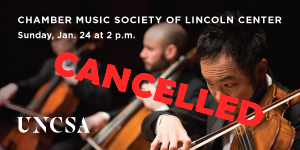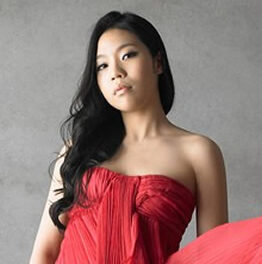The bane of the average opera lover and this critic is the stage director as auteur. The period and stage directions established by the composer and librettist are tossed and some far-fetched fantasy is shoe-horned into a masterpiece. Peter Sellars’ staging of the three Mozart/da Ponte operas in a 1950s Bronx diner, a South Bronx ghetto, and a Trump Tower penthouse, respectively, is like spray painting graffiti on an 18th-century masterpiece.* Audiences are not as thick as cutting-edge directors think. They are capable of drawing parallels as well as of inferring from period texts without a director hitting them over the head with the obvious. This artistic credo is at the heart of my fulsome praise of Piedmont Opera‘s stage director Chuck Hudson’s splendid achievements in his traditional staging of Mozart’s Così fan tutte. Fresh touches abounded throughout this production, set in Naples, Italy, during the late 1700s. An imaginative twist at the end is fully justified by the ambiguity of both Mozart’s music and da Ponte’s libretto.
Until both post-World War periods of the 20th century, Mozart’s Così was neglected. Julian Rushton, in Mozart and His Operas (The New Grove Series), summarizes the common view: “heartless farce clothed in miraculous music.” Beethoven, whose ideal woman was the faithful Leonore of his opera Fidelio, was appalled that Mozart had wasted his genius on such an immoral tale. The basic plot, “the trial of female constancy and the wager,” had been anticipated in literature by Boccacio, Shakespeare (Cymbeline) and Cervantes and by such myths as the Procris story. Mozart’s librettist, Lorenzo da Ponte, had received a sophisticated classical education that is reflected in the plethora of quotations and allusions that abound in the text. It is far from clear to what degree Mozart was aware of these or how closely he had read the libretto. This may go far to explain the great disparity between his glorious music and the libretto’s banality. For example there is the terzettino, chimerical music Mozart wrote to accompany Don Alfonso and the two sisters “singing” goodbye to the two officers. By tradition these ought to have been spoken, but the composer set them to music! This is the magical moment when the opera pulls away from being just another buffo farce.
The opera opens in a coffee house with two soldiers, Ferrando and Guglielmo, proclaiming to their friend, the old bachelor Don Alphonso, the virtues of their lovers, the sisters Dorabella and Fiordiligi respectively. Don Alphonso wagers that their sweethearts’ fidelity will not endure a day of their lovers’ absence. Don Alphonso and the sisters’ maid, the amoral and cynical Despina, are stock figures in literature of the period. The soldiers disguise themselves as “Albanians” and, to break down the sisters’ resistance take a mock poison. Despina, disguised as an apostle of Dr. Mesmer, “removes” the poison with a huge horseshoe magnet (long a traditional sight gag that never fails). Dorabella pairs with Guglielmo and Fiordiligi pairs with Ferrando and soon are “married” by Despina, disguised as a lawyer. Music signals the imminent return of the soldiers. The sisters’ infidelity is revealed, but the soldiers decide to forgive them. In most productions, Ferrando marries Dorobella and Guglielmo marries Fiordiligi. In the relaxed sexual mores of post-WWI and in the “swinging” 1960s the sisters take up the couplings formed with their respective “Albanians.”
Stage director Chuck Hudson’ “outside the box” approach was visible during mimed onstage action during the overture. Don Alphonso is seated at the breakfast table with his nose buried in his newspaper. Despina, in this production his fiancée, flirts, attempting to get his undivided attention. Over the course of the overture her every attempt fails and she rips off his ring from her finger and storms offstage. Were it not for the odds against such an alliance because of the gaps in their social classes, this would go far to explain Don Alphonso’s cynicism about relationships. Since this review will appear after the last performance I will reveal Hudson’s original take for the final pairings of the lovers. Instead of returning to the original Ferrando-Dorabella and Guglielmo-Fiordiligi pairings, Fiordiligi pairs with Ferrando but Dorabella pointedly pushes Guglielmo back in his chair and goes backstage alone. Perhaps she intends to embrace the philosophy in the old ’60s pop song with the refrain, “love the one you’re with.” Despina joyfully takes back her ring and embraces Don Alphonso!
Hudson’s staging for Piedmont opera benefited from a strong cast of young singer-actors who threw themselves wholeheartedly into the spirit of his approach. Any initial reservations about the flexibility of tenor Brian Stucki’s voice as Ferrando evaporated in the melting tones of his “Un’ aura amorosa” (“Her eyes so alluring”), sung after quickly warming up. His pleasing timbre is enhanced by a hint of darkness. Baritone Ryan Taylor, in the role of Guglielmo, brought a solid resonance to his warm and burnished tone. His mastery of the slow facial take rivaled Jack Benny and greatly enhanced the humor of the seduction scenes. Stephen Eisenhard’s plangent and solid bass made Mozart’s failure to write full arias for Don Alphonso even more regrettable than usual. Mezzo-soprano Karin Wolverton, as Fiordiligi, managed to weld unknowing parody with breath-taking vocalism. This was done most memorably during her aria “Come scoglio” (“Reef as well as rock” ), an over-the-top assertion of her faithfulness with what The New Kobbé’s Complete Opera Book calls “wide leaps and absurd jumps from the top to the bottom of the soprano range.” During this, Hudson surrounded Wolverton with amusing stage business that heightened the comic effect. Mezzo-soprano Janine Hawley portrayed Dorabello as a ditzy blond with a wandering eye. Rhonda Overman’s bright soprano and flair for sight gags were welcome in the role of the sisters’ maid Despina, mistress of disguises.
Conductor James Allbritten led an apt-sized force of Winston-Salem Symphony members in a sizzling and vivacious performance. Tight ensemble was combined with strongly characterized instrumental solos by the woodwinds, especially the clarinets, and the horns. The Stevens Center, with its deep orchestra pit under the stage, is the perfect venue for these Mozart operas. The fine classical revival set was designed by David P. Gordon for the Saratoga Opera and was easily modified for scene changes. The russet sunset view of the back of Naples during the Act II scene in the garden was just one of several memorable products of Norman Coates’ skilled lighting design. The 18th-century period costumes, designed by Howard Tsvi Kaplan, were also on loan from the Saratoga Opera. The costumes for the “Albanians” were the most imaginative that I have seen in over a dozen productions. The free and lively English translation by Nancy Goldsmith, used for supertitles, contributed greatly to the audience’s grasp of the humor.
*Edited/corrected 3/29/07.













